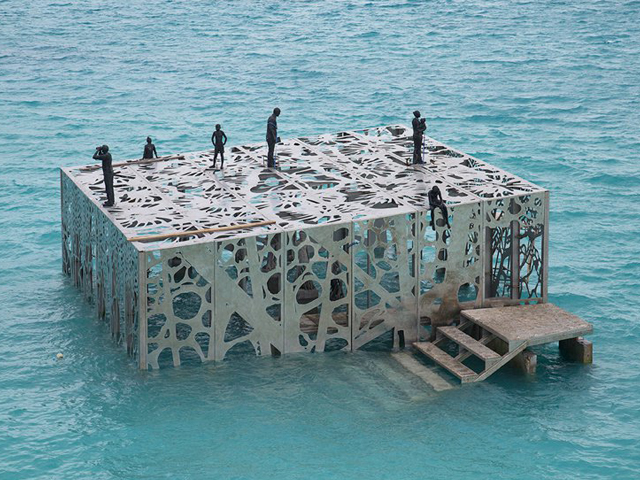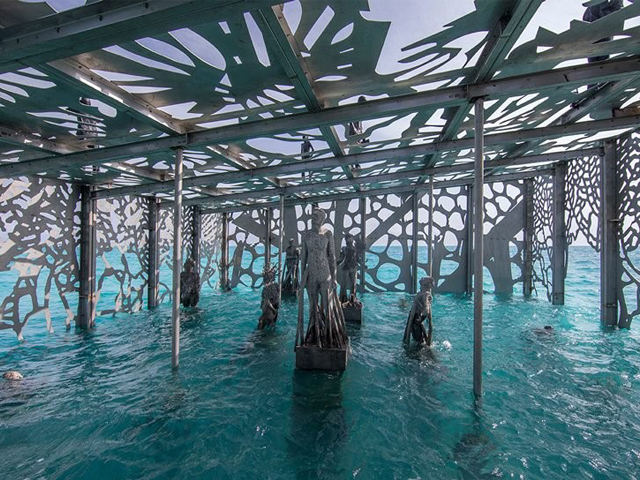DIVING FOR ART IN THE MALDIVES
02 Aug 2018
Coralarium is the world's first inter-tidal art museum; a submerged stainless steel gallery of sculptural artworks in the Maldives that offers thought-provoking views on rising sea levels.

Environmentalist and artist Jason Decaires Taylor has completed the installation phase of his latest underwater art museum, the Coralarium. The project is the Maldives’ first coral regeneration project and comprises of a stainless steel semi-submerged tidal gallery space that exhibits a series of sculptural artworks on the skyline, inter-tidal waterline and seabed. 
An artwork, ecological innovation and statement on the environment combined, the Coralarium is in part an address to the one-degree rise in ocean temperature that is causing devastation to the coral reefs worldwide. The museum features statues formed above ground that incorporate endemic environmental elements: some have tree trunks for limbs while others are embedded with patterns of coral. Elsewhere, a series of children looking up towards the surface of the sea pose questions about rising sea levels. 
Taylor aims to create a direct pathway to the ocean, utilising the island resort’s long swimming pool to denote a starting point in which guests can explore the clear shallow waters of the sea. Sea-scaped with underwater poplar trees and endemic planted corals, it leads 100m through the shallows towards the underwater realm, a symbolic pathway to another world. 
Guests swim to the six-metre-tall cube-shaped structure, which has its front façade submerged up to the median tide of three metres. The complex structural formation is based on natural coral structures and is porous to allow the tides, current and marine life to pass through, while dissipating oceanic forces and encouraging nature to colonise and seek refuge. 
Assembled underwater, the construction sees the use of marine stainless steel, which mirrors the surrounding blue ocean. The choice of materials means that over time the museum will take on the patina of the sea, as well as becoming a host to colonising algae.







